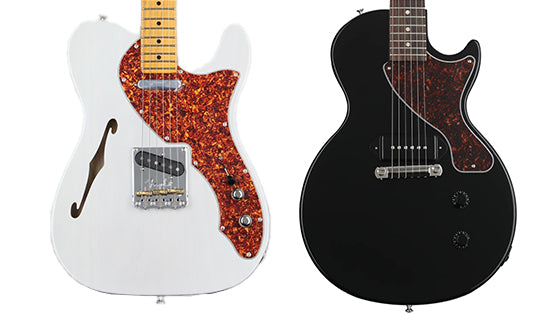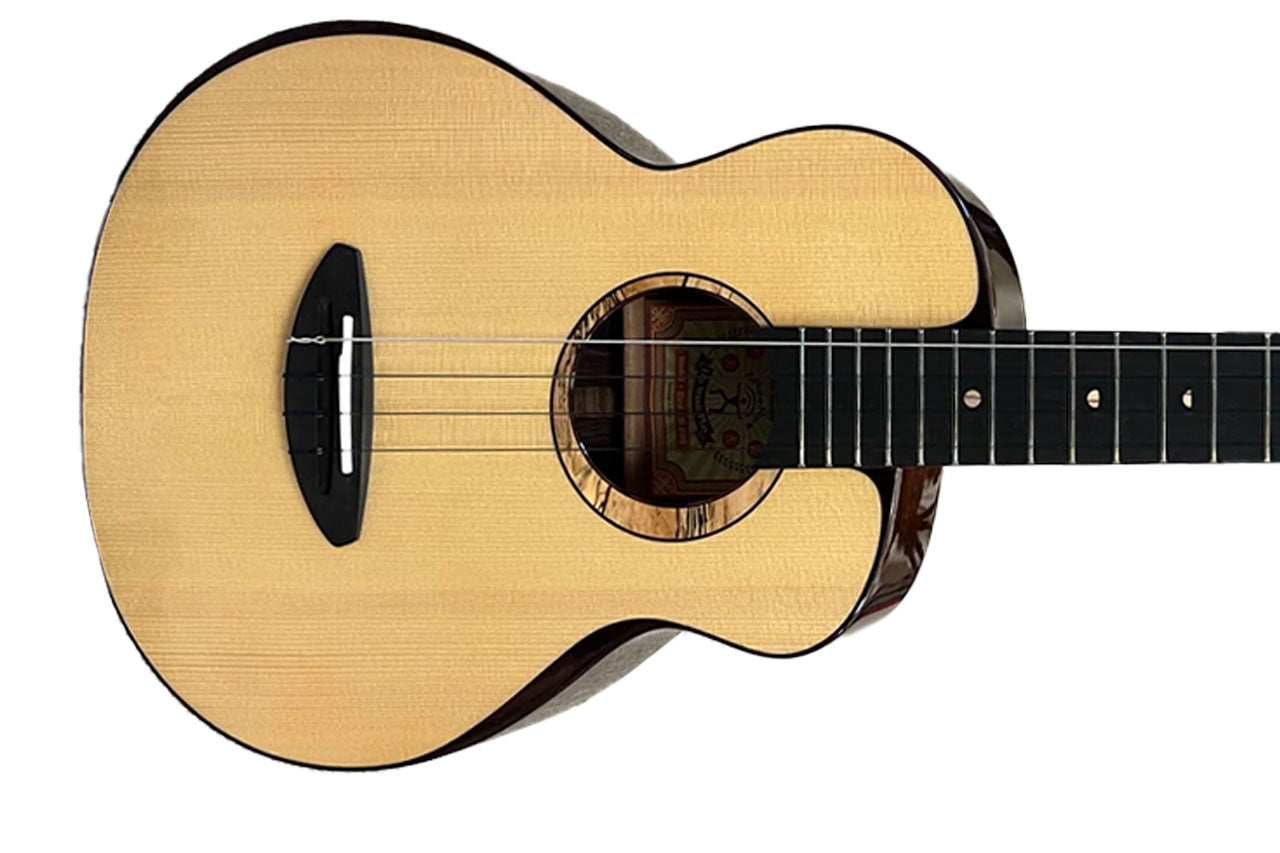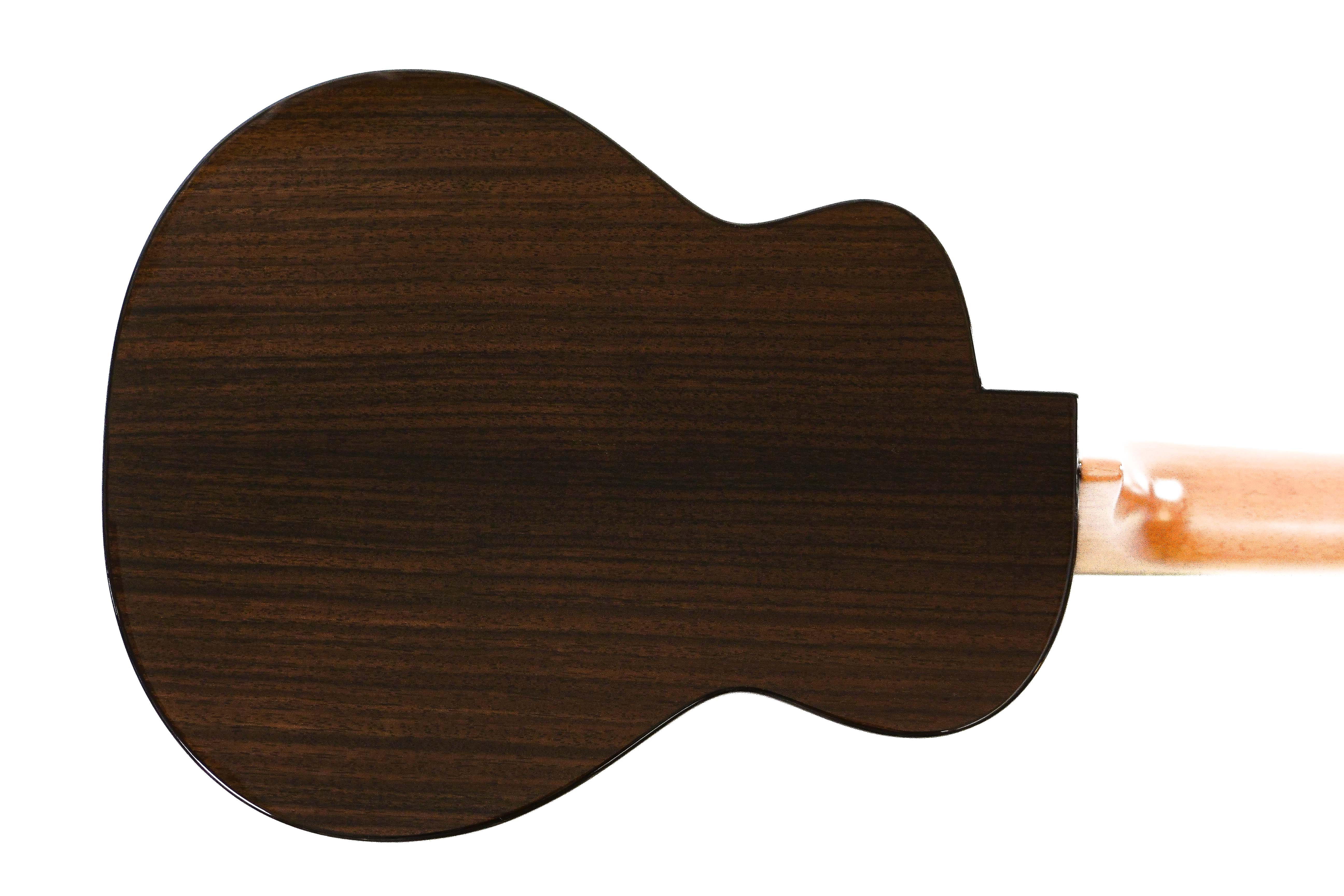Introduction
In the world of electric guitars, stripped-down simplicity isn't just a trend—it's a timeless allure that amplifies raw musical power. Today, we explore two iconic instruments that embody this ethos: the Telecaster Thinline and the Les Paul Junior.
Telecaster Thinline: Embracing Simplicity
The Fender Telecaster Thinline stands as a beacon of minimalist design. With its semi-hollow ash body and sleek white blonde finish, it marries classic aesthetics with modern playability. The deep C-shaped maple neck and narrow tall frets ensure effortless navigation across the fretboard, while the Fender V-Mod II single-coil pickups deliver that signature Telecaster twang—crisp, articulate, and unmistakably clear.
Les Paul Junior: Raw Power Unleashed
In stark contrast, the Gibson Les Paul Junior embodies a no-frills approach to rock 'n' roll. Its solid mahogany body, finished in ebony nitrocellulose lacquer, exudes robustness and attitude. The vintage 50s neck profile and rosewood fingerboard provide a comfortable platform, but it's the P-90 Dogear single-coil pickup that steals the show. Known for its bold, punchy tone, the P-90 transforms every note into a statement of raw, unadulterated power.

Comparing Design Philosophy
Where the Telecaster Thinline favors lightness and clarity, the Les Paul Junior embraces depth and aggression. The Telecaster's semi-hollow construction offers resonance and versatility, while the Les Paul's solid body delivers sustain and intensity. Both guitars prioritize simplicity, yet each achieves it through distinct design choices that cater to different musical expressions.

Sound and Tone
Delving into sound, the Telecaster Thinline's V-Mod II pickups excel in producing bright, shimmering tones ideal for country, blues, and indie genres. Meanwhile, the Les Paul Junior's P-90 pickup roars with a rich midrange and gritty edge, perfect for rock, punk, and blues-rock styles. The simplicity of their electronics enhances clarity, allowing players to articulate every nuance of their performance.

Versatility vs. Focus
While the Telecaster Thinline spans a broader range of genres thanks to its airy semi-hollow construction and versatile pickups, the Les Paul Junior hones in on a focused, punchy sound that resonates deeply in rock-centric music. Choosing between them often comes down to whether you prioritize versatility across genres or a specific sonic character that cuts through the mix.

Player Preferences and Recommendations
For those seeking a guitar that adapts effortlessly to various styles, the Telecaster Thinline promises unparalleled versatility and playability. On the other hand, players drawn to the Les Paul Junior will find themselves immersed in its powerful, assertive tone that demands attention on stage and in the studio. Ultimately, the choice depends on your musical journey—so pick up both, feel their resonance, and let your instincts guide you.

Conclusion
In the realm of stripped-down electric guitars, simplicity isn't just about fewer features—it's about amplifying the essence of music itself. Whether you lean towards the Telecaster Thinline's clarity or the Les Paul Junior's raw power, both guitars celebrate the beauty of minimalism in their own distinctive ways. Embrace the simplicity, unleash the power, and discover the guitar that resonates with your soul—it's the first step towards crafting your own musical legacy.
Get the Fender American Professional II Telecaster Thinline Electric Guitar HERE
Get the Gibson Les Paul Junior HERE
Master the Guitar with Rock Like The Pros
As an affiliate, I earn from qualifying purchases at no additional cost to you.







